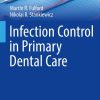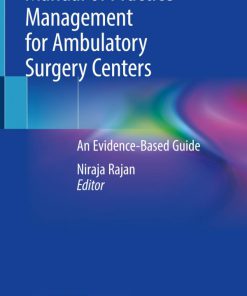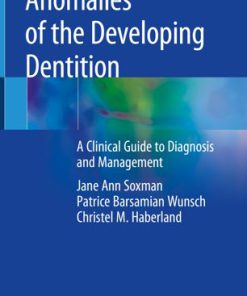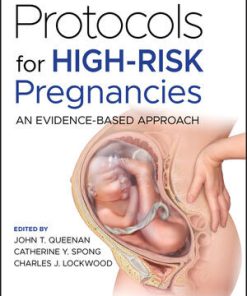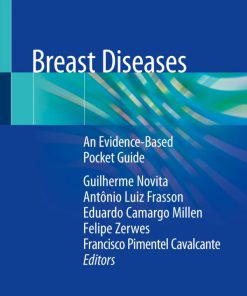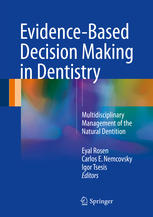Orthodontic Management of the Developing Dentition An Evidence Based Guide 1st edition by Martyn 9783319546377 3319546376
$50.00 Original price was: $50.00.$25.00Current price is: $25.00.
Orthodontic Management of the Developing Dentition An Evidence Based Guide 1st edition by Martyn – Ebook PDF Instant Download/Delivery: 9783319546377, 3319546376
Full dowload Orthodontic Management of the Developing Dentition An Evidence Based Guide 1st edition after payment
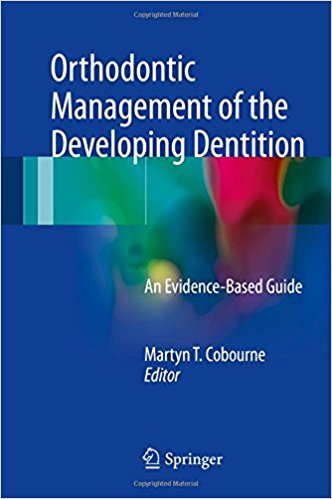
Product details:
• ISBN 10:3319546376
• ISBN 13:9783319546377
• Author: Martyn
Orthodontic Management of the Developing Dentition
An Evidence-Based Guide
This multiauthor clinical guide provides an evidence-based overview of orthodontic management during development of the dentition. It begins with an illustrated account of normal dental development and then covers the management of problems that are commonly seen during this process. These include acquired problems, such as caries, space loss and dental trauma, developmental anomalies, including variation in tooth number and eruption defects. In addition, detailed consideration is given to the interceptive management of class II and class III malocclusion and transverse discrepancies. There is an emphasis on evidence-based management of these developmental problems and each chapter is richly illustrated with clinical examples.
Orthodontic Management of the Developing Dentition An Evidence Based Guide 1st Table of contents:
1: Development of the Dentition
Development of the Dentition
Embryonic Dental Development
Molecular Basis of Dental Development in Brief
Histological Basis of Dental Development in Brief
Postnatal Development of the Dentition (Box 1.1)
The First 6 Months
From 6 Months to 5 Years of Age
Space and Occlusal Development in the Primary Dentition
Development of the Permanent Dentition (Box 1.2)
The Early Mixed Dentition (6–8 Years) (Fig. 1.5)
Occlusal Features of the Early Mixed Dentition (Fig. 1.6)
The Late Mixed Dentition (10–13 Years) (Fig. 1.9)
Space and Occlusal Development in the Late Mixed Dentition (Box 1.3)
Permanent Dentition (13 Years Onwards) (Fig. 1.11)
Eruption Is Divided in Five Different Stages
References
2: Space Loss and Crowding
Introduction
Aetiology of Crowding
Predictors of Crowding in the Developing Dentition
Local Factors Affecting Crowding and Space Loss
Early Loss of Deciduous Teeth
Retained Deciduous Teeth
Developmental Absence of Teeth
Unscheduled Loss of Permanent Teeth
Extra Teeth: Supernumerary and Supplemental Teeth
Anomalies in Tooth Form (Microdont/Megadont)
Anomalies in Tooth Position
References
3: First Permanent Molars
Normal Development of the First Permanent Molar
Development of the First Permanent Molars
Morphology of the FPM
Ideal Occlusion
Complications Associated with FPMs
Hypomineralization
Impaired Eruption of FPMs
Caries
Extracting FPMs
Orthodontic Considerations When Extracting FPMs
Extra-Oral Assessment of the Underlying Pattern of Facial Growth
Intra-Oral Assessment of the Presence/Absence and Status of the Erupted Teeth
Intra-Oral Assessment of Existing and Potential Crowding in the Upper and Lower Arches
An Intra-Oral Assessment of the Occlusion
Radiographic Assessment of the Presence/Absence of Unerupted Permanent Teeth
Extraction Decisions in Patients with a Low Need for Orthodontic Treatment
Timing of Extractions
Compensating Extractions
Balancing Extractions
FPM Extraction Decisions in Patients with a Need for Orthodontic Treatment
Class I Crowding
Class II Malocclusion
Class II Division 1 Incisor Relationship
Class II Division 2 Incisor Relationship
Class III Malocclusion
References
4: Supernumerary Teeth
Introduction
Prevalence
Aetiology
Classification
Location
Morphology
Clinical Features
Management
References
5: Tooth Agenesis
Definition and Diagnosis
Terminology
Prevalence of Tooth Agenesis
Primary Dentition
Permanent Dentition
Most Frequently Missing Permanent Teeth
Aetiology of Tooth Agenesis
Environmental Causes of Tooth Agenesis
Genetic Causes of Tooth Agenesis
Anomalies Associated with Tooth Agenesis
Dental Anomalies
General Signs and Symptoms
Tooth Agenesis and Cancer
Tooth Agenesis in Orofacial Clefting and Syndromes
Cleft Lip/Palate
Syndromic Tooth Agenesis
Down Syndrome (Trisomy 21)
Axenfeld-Rieger (Rieger) Syndrome
Ectodermal Dysplasias
Clinical Problems and Management of Patients with Tooth Agenesis
Primary and Early Mixed Dentition
Late Mixed and Permanent Dentition
Established Dentition
References
6: Trauma to the Permanent Maxillary Incisors in the Mixed Dentition and Orthodontics
Introduction
Aetiology of Dental Trauma
Risk Factors for Dental Trauma
Impact of Traumatic Dental Injuries to Permanent Maxillary Incisor Teeth
Prevention of Trauma
Use of Mouthguards
Early Orthodontic Treatment
Management of Acute Traumatic Injuries in the Mixed Dentition
History of the Traumatic Incident
Fractures
Luxation Injuries
Complications
Follow-Up
Orthodontic Movement of Traumatised Teeth
Discussion
References
7: Impacted Maxillary Central Incisors
Introduction
Aetiology and Prevalence
Diagnosis
Clinical Examination
Radiographic Examination
Upper Standard Occlusal Radiograph
Periapical Radiograph
Dental Panoramic Radiograph
Lateral Cephalometric Radiograph
Cone Beam Computed Tomography
Timing of Treatment
Management
Informed Consent
Create Sufficient Space
Plan Surgical Intervention
Remove Any Physical Obstruction with Evidence of Delayed Incisor Eruption
Exposure of Dilacerated Incisors
Orthodontic Guided Tooth Eruption
Cystic Change
Surgical Removal of Unfavourable Incisors
Surgical Replantation
Retention
Discussion
References
8: Early Management of the Palatally Displaced Maxillary Permanent Canine
Normal Development and Eruption
Disturbances of Development and Eruption
Diagnosis of a Palatally Displaced Maxillary Permanent Canine
Clinical Features
Radiographic Features
Early Interventions
Extraction of the Primary Canine
Space Creation
Rapid Maxillary Expansion (RME, Fig. 8.7)
Headgear
Bonded Orthodontic Appliance
Implications for Research
Implications for Clinical Practice
References
9: Early Treatment of Class II Malocclusion
Introduction
Incidence
Aetiology
Skeletal
Soft Tissue
Digit or Thumbsucking
Indications for Early Treatment
Growth
Psychosocial Health
Prevention of Dentoalveolar Trauma
Compliance
Second Phase of Treatment
Better Outcomes
Mechanics for Early Treatment of Class II Malocclusion
Thumb Deterrents
Removable Appliances
Functional Appliances
Headgear
Fixed Appliances
References
10: Class III Malocclusion
Introduction
Aetiology of Class III Malocclusions in Mixed Dentition
Extra-oral Assessment
Intra-oral Assessment
Cephalometric Assessment
Indications for Interceptive Treatment of Class III
Treatment of Simple Dentoalveolar Anterior Crossbites
Growth Modification and Orthopaedic Treatment
Functional Appliances
Chin Cup
Protraction Facemask
Bone-Anchored Appliances
References
11: Early Management of Posterior Crossbites
Definitions: Posterior Crossbite
Aetiology
Epidemiology
Implications
Functional Crossbite and Temporomandibular Dysfunction
Growth and Development
Functional Changes in the Masticatory Muscles
EMG Activity
Bite Force
Treatment
Expansion Appliances
Fixed Appliances
Quad-Helix (Fig. 11.2)
Expansion Arch: Slow Expansion
Haas
HYRAX
Bonded Acrylic Splint
Minne Expander
Removable Appliances
Upper Removable Appliance
Implications for Research
Implications for Clinical Practice
Posterior Crossbite Treatment Sieve
References
Read Less
People also search for Orthodontic Management of the Developing Dentition An Evidence Based Guide 1st:
orthodontic management
guidelines for the orthodontic management of the traumatised tooth
orthodontic management software
dolphin orthodontic management software
surgical and orthodontic management of impacted teeth
You may also like…
Business & Economics
Politics & Philosophy - Social Sciences
Therapist Self Disclosure An Evidence Based Guide for Practitioners Graham Danzer
Medicine
Anomalies of the Developing Dentition A Clinical Guide to Diagnosis and Management Jane Ann Soxman
Medicine - Others
Protocols for High-Risk Pregnancies : An Evidence-Based Approach John T. Queenan (Editor)
Medicine - Dentistry
Clinical Management of Orthodontic Root Resorption Glenn T. Sameshima


